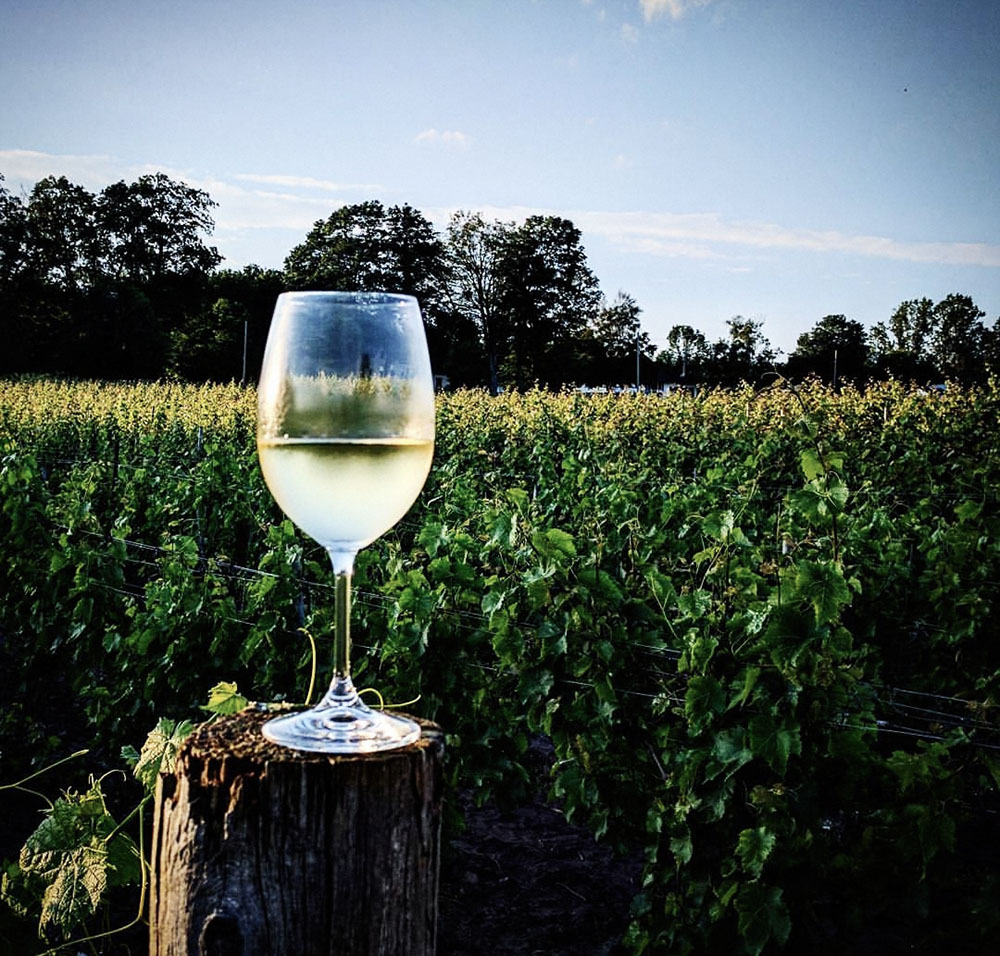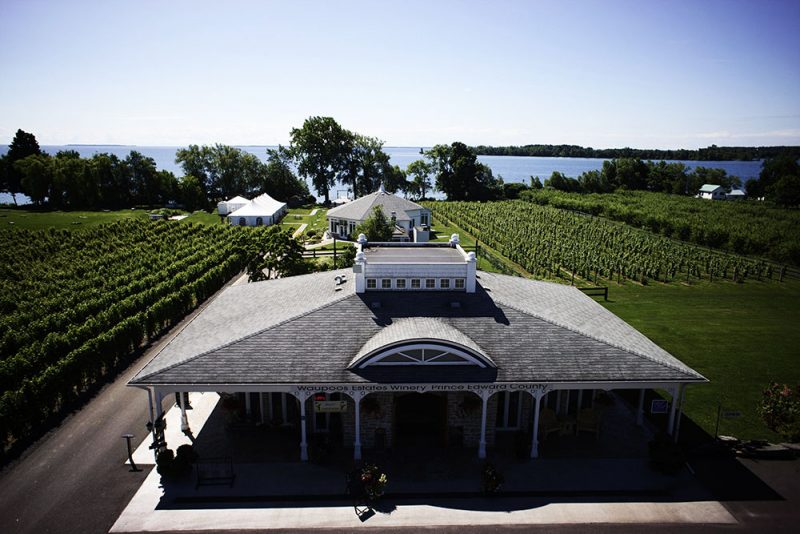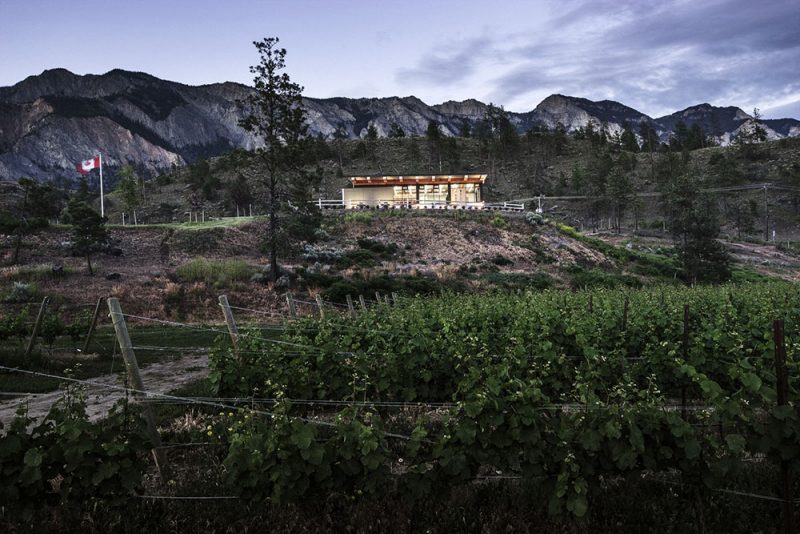On a sunny spring day some 25 years ago, in Gehringer Brothers’ immaculate South Okanagan vineyard, a small group listened intently to winemaker Walter Gehringer. “Making red wines in the Okanagan is really pushing the envelope,” Gehringer suggested, in response to a query about why they produced only whites.
That occasion remains vivid in my mind. Not so much because of the beauty of the setting — or because someone discovered a prickly pear cactus the hard way, by sitting on it. But, above all, because that statement is now a potent indicator of just how much has truly shifted since before “climate change” made it into the everyday vernacular.
More than a few vintages have passed since people like the Okanagan’s Harry McWatters (first to ante up on Bordeaux varieties) and Inniskillin’s Karl Kaiser and Donald Ziraldo, in Niagara, took their leaps of faith that eventually helped put Canada on the world wine map. While their success may have been foreseeable, much less predictable have been the other envelopes pushed. In places like Lillooet, Kamloops, the Creston Valley, Prince Edward County, the Eastern Townships and Annapolis Valley, viticulturists have been successfully pushing the traditional boundaries of cool climate viticulture.
When Bruce Ewert and his wife, Pauline Scott, decided to head out east from the west coast, it marked a return to Scott’s Nova Scotia roots. After several years of working for others, as head winemaker at Jackson Triggs and Hawthorn Mountain, BC-raised Ewert wanted to establish his own winery on the east coast.
And he knew it was vital to plant a variety that made sense — in this case, the l’Acadie Blanc that inspired the winery’s name.
“We tasted the l’Acadie grape. I liked the acid profile and the fruit, which isn’t overly fruity,” says Ewert. “At that point, there was no bubble in the province; I thought it would make a wonderful sparkling wine.

“We tasted the l’Acadie grape. I liked the acid profile and the fruit, which isn’t overly fruity,” says Ewert. “At that point, there was no bubble in the province; I thought it would make a wonderful sparkling wine.
“The Okanagan is described as cool climate. But, for sparkling, a lot of times the sugar accumulation was outpacing the ripening process. So to get ripe grapes, and the yardsticks you need, a lot of times I was working with grapes that weren’t physiologically right. But we had to pick because the sugars were getting too high.”
In Nova Scotia, he goes on to explain, “There’s less heat units. We get about 1000 units, with a base of 10 degrees Celsius. And so far, after 12 vintages, we’ve consistently had moderate sugar levels with very good acid retention, which adds to the excitement of making sparkling wine out here. And we were the first to do it!”
Ewert ponders the impact of a changing climate on what he describes as “an already short cycle,” or about 180 days: “Bud break now sometimes comes later than usual, and first frost possibly earlier. And even though winters may be getting milder, it’s not a certainty. Last year, we had our second bud break on June 20th. But [the] l’Acadie grape on our property adapted amazingly well and shortened its cycle through flowering and veraison, and still ripened for sparkling.”
“Bud break now sometimes comes later than usual, and first frost possibly earlier. And even though winters may be getting milder, it’s not a certainty.” Bruce Ewert
Prince Edward County’s first commercial vinifera vineyard was established by Ed Neuser and Rita Kaimins in 1993. Opening Waupoos Estates Winery in 2001, they were truly pioneers in kick-starting the County’s thriving scene. Waupoos winemaker Amy Baldwin (who has worked for the winery since 2011) says they’re very fortunate to be right on the lake.
“When I first came, they said ‘Don’t worry, you know, the lake never freezes. It really helps us out in the winter.’ And then of course, in back-to-back winters, the lake has frozen over!
“Our winters are a little unpredictable here. We do notice we’re getting a little bit colder. The snow is coming a lot later. It benefits us as a form of insulation,” says Baldwin, who now sees winter lows dipping to minus 26 to 27 Celsius.
“We weren’t as hard hit as we initially thought,” says the winemaker. “We don’t bury our vines. Although, if we have another terrible winter, we would consider it. We do hill up to our graft and bury a cane or two.”
Baldwin says they’re definitely noticing that summer is starting later. And the last couple of years have seen “a really rainy start, and a cold, arduous spring,” which means bloom is happening a week or two later.
Waupoos has 18 varieties planted, split pretty evenly between vinifera and hybrids, and evenly between reds and whites. The winery’s experimental philosophy still leads to trialling new varieties, such as Muscat, which was planted four years ago.
“We’re still playing with that mindset of ‘what can we grow here?’,” Baldwin says, “but, overall, if our season is good, the sugars come along really beautifully.”
It is a different climate from Niagara — and often a few days behind. But, she says, “the quality of fruit is really incredible.
“We’re certainly in an industry where we rely on Mother Nature. So, of course, we need to work with her, not against her.”
Sea Star Siegerrebe 2018, Gulf Islands ($24)
This cross between Madeleine Angevine and Gewürztraminer yields an appealing rose petal nose with stone fruit and tropical notes before a palate of citrus and tangerine with a hint of rose petal, and a touch of gently herbal edge before lingering lychee and citrus close.
Sea Star Stella Maris 2018, Gulf Islands ($24)
This blend of Gewürztraminer, Pinot Gris, Schoenburger and Ortega with Chardonnay from just across the water on Saturna Island, offers a pretty pale pink hue from the Pinot Gris, with orchard and stone fruit before a juicy palate of peach, citrus and melon, wrapped in good acidity through the finish.
L’Acadie Vineyards 2010 Prestige Estate Brut, Gaspereau, Nova Scotia ($48)
Toasty notes on top, hints of brioche and a lively stream of fine bubbles add up to a convincing nod to Champagne. Good mousse and a well-textured palate emphasized by citrus and leesy notes before a clean and lengthy finish.

In 2009, Rolf de Bruin and Heleen Pannekoek co-founded Fort Berens Estate Winery on a 20-acre vineyard they established in Lillooet, BC. Almost a decade on, de Bruin is noticing milder winters.
He relies on old-timers for a picture of how things used to be. Some 80 years ago, Lillooet used to have orchards with soft and hard fruits, says de Bruin.
“But at some point, they were lost, during harsh winters in the 1940s and ’50s. The only mementos are a few old wild trees dotted about and some street names [like Orchard Drive]. Yet now the winters are warming considerably.
“We haven’t seen anything below minus 20 over the last few years,” says the winery owner.
Lillooet, a 90-minute drive through the mountains northeast of Whistler, was appealing for its much more affordable land compared to the Okanagan.
“It was about location and economic factors for us,” he says. “The really good [Okanagan] spots were all taken. The choices we had were farther away, more off the beaten track — and prices at the time didn’t make sense.”
Even though Kamloops has grown and there’s more acreage, “We still feel this climate is more conducive. We don’t experience any winter kill …”
However, he goes on to suggest that Lillooet’s milder winters affect grape growing in other ways.
“Climate change means summers are much drier, with less precipitation in spring and overall less snow in winter. That translates to a drier climate but also means more forest fires and other issues that affect both grape growing and tourism,” he says.
So, will Fort Berens have to reconsider what’s been planted?
“I don’t think it will require us to change varieties,” says de Bruin. “Pinot Noir is still the variety we struggle with the most because it does get so hot here. And that affects its development. But the other varieties thrive in that heat. We expect to continue with what we have.”
L’Acadie Vineyards 2017 Estate L’Acadie, Gaspereau, Nova Scotia ($22)
Hand-harvested from 12-year-old organic vines on well-drained rocky schist and sandstone. A pronounced mineral texture with a touch of saline. Cork closure, with potential to age up to 10 years.
Waupoos Estates Baco Noir Appassimento 2017, Prince Edward County ($50)
Hand-harvested grapes, greenhouse-dried for 7 days on custom-built pine racks, yield a well-structured palate with red and black fruit, dark cherry and mocha with a hint of raisin through a lengthy end.
Waupoos Estates Red Rabbit 2016, Prince Edward County ($18)
Easy-drinking blend of 56% Merlot and 44% Cabernet Sauvignon with some Niagara fruit included. Upfront red and black berries with toast and vanilla notes, before a plush cherry- and cassis-toned palate supported by well-integrated tannins.

Significant change is afoot even on usually much more moderate southern Vancouver Island and the Southern Gulf Islands. Observers report a considerable shift over the last few vintages, particularly between 2014 and 2018, especially when compared to the decades leading up to the millennium.
Rainfall during the key growing season summer months has decreased by about one half — to near drought levels. However, annual rainfall is actually increasing, with more rain (and snow) in the winter months.
While it’s unlikely that the coast will become as heated as the interior any time soon, Pinot Noir in particular is now becoming more reliable, with riper fruit and bigger yields. But there’s also a down-side, as some dry-farmed vineyards may have to invest in irrigation in order for vines to survive water stress.
On Pender Island, at the southernmost extremity of the Gulf Islands, Sea Star Estate Winery has been busy expanding its Pinot Noir program, specifically with the purchase in 2017 of Saturna Vineyards, on the neighbouring Island of the same name. The addition of a total of 44 acres under vine is extremely beneficial, says owner David Goudge, who, in addition to an expanded program for much in demand Pinot Noir also plans to make sparkling wine.
Climate change could well have been flexing its muscles as long as a couple of decades ago. One harbinger was BC’s 1998 overheated vintage, at the time the hottest on record — though no more. However most of those who chose then to stake their viticultural claim in those “borderline ripening” areas had few clues such game changing shifts might occur.
Oh, and just for the record, Gehringer Brothers now makes Pinot Noir and several Bordeaux varieties and blends. The envelope is being pushed no more.
Fort Berens Dry Riesling 2018, Lillooet, BC ($19)
Hand-harvested estate-grown fruit, stainless-steel fermented. Upfront aromas of citrus and orchard fruit, bright green apple and zesty lemon notes with a streak of minerality below zippy acidity, the product of significant diurnal temperatures. Crisp and clean through the finish.
Fort Berens Pinot Noir 2016, Lillooet, BC ($26)
A lighter-bodied Pinot but one that punches well above its weight. Primarily Lillooet estate fruit (74%) with 26% from Vernon’s The Rise vineyard. Aromas of wild red berries and spice before a well-balanced palate of strawberry and cherry. Good intensity, balanced mouthfeel and silky tannins through a gently spicy and juicy finish.
